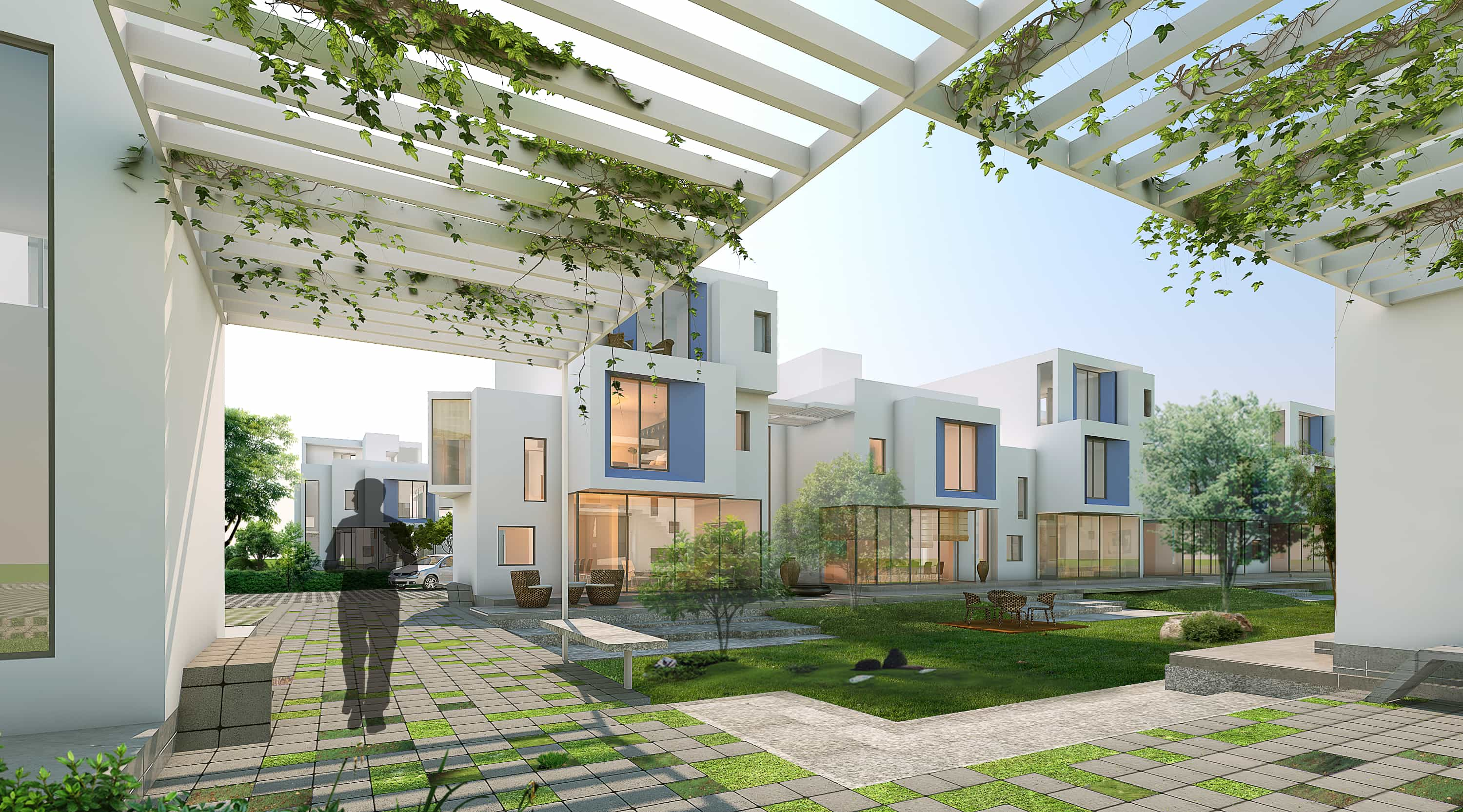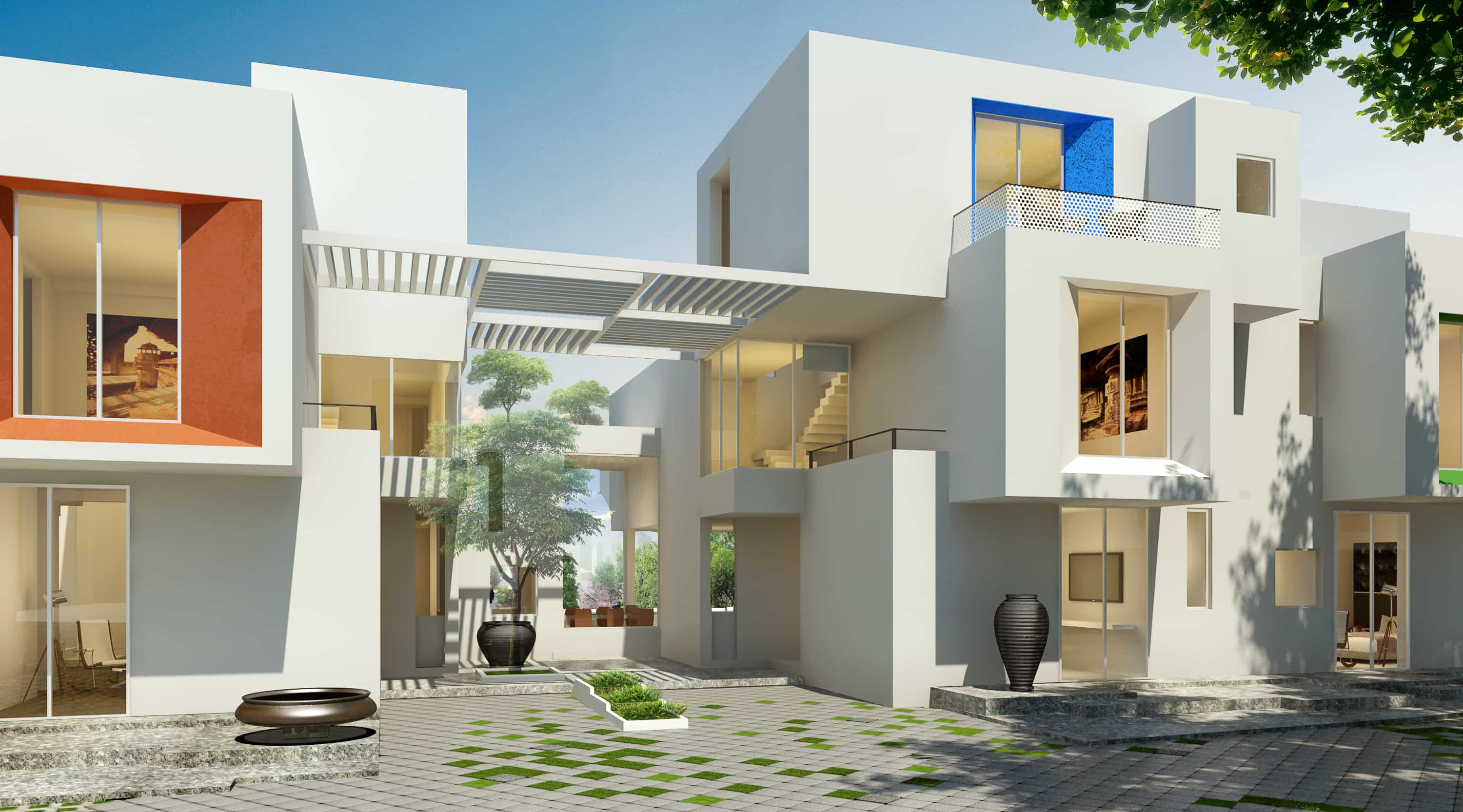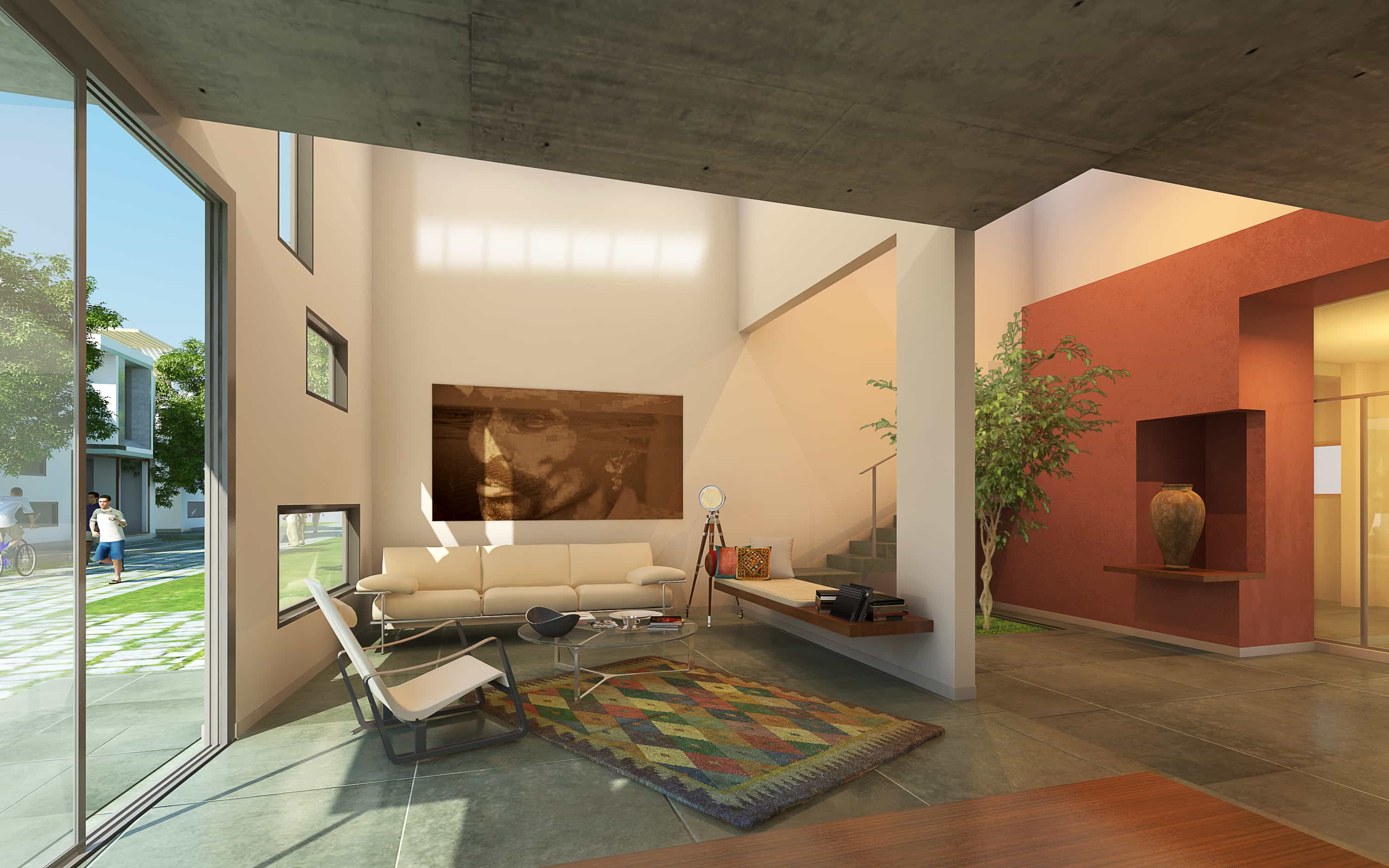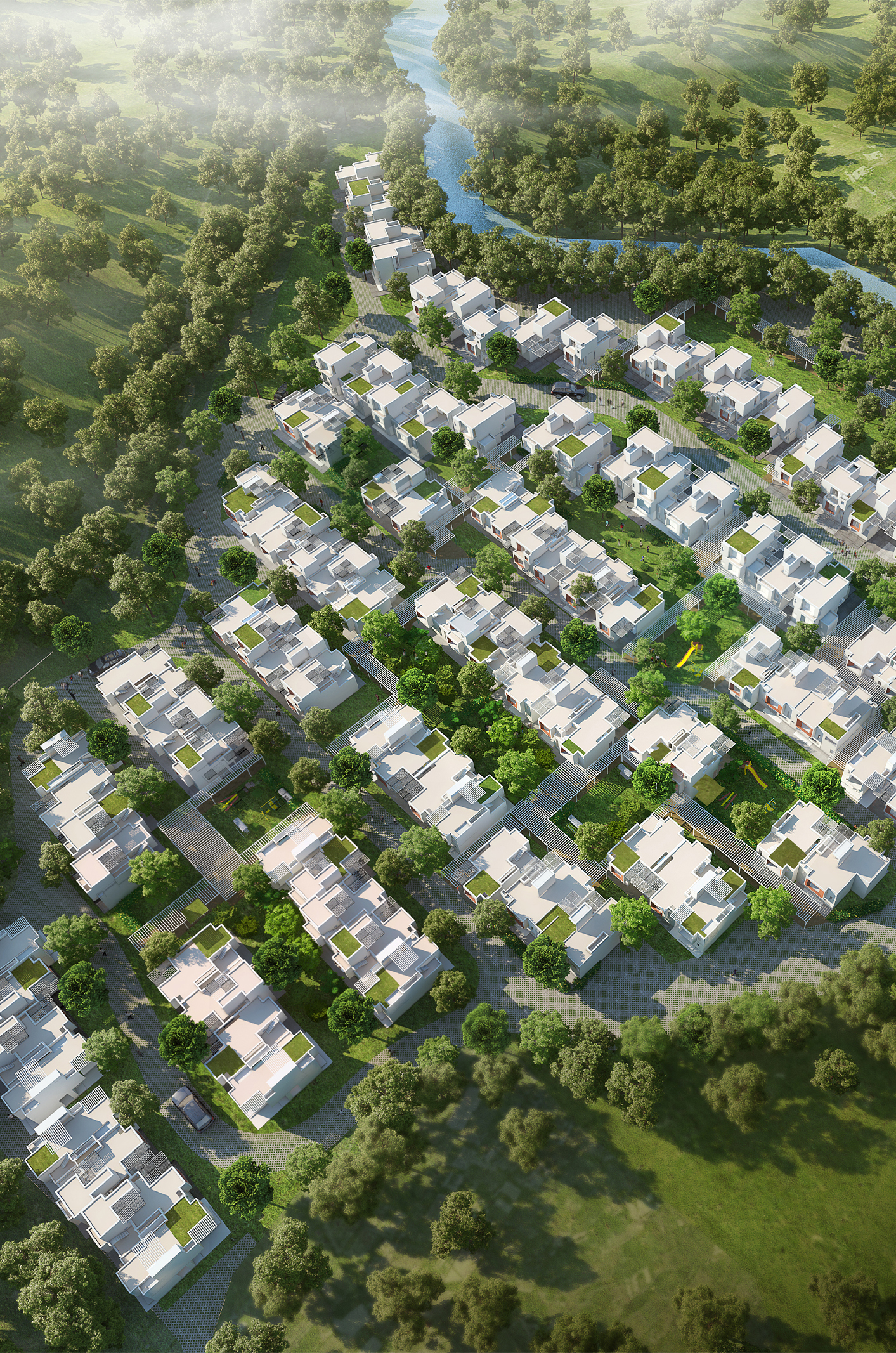Creating community spaces to allow for more interaction amongst the community members.
Segregation of Vehicular and Pedestrian Areas – Allows all houses to have open ground floors, where front-of-house and back-of-house seamlessly flow into the streets. Clusters Instead of Rows – Combinations of various housing types, clustered around community gardens and squares, create small neighborhoods instead of monotonous rows. Maximizing ‘Types’ of Houses – Having seven typologies of houses in various orientations allows for variety in the layout of the cluster. Community Spaces & Pedestrian Streets – Segregation between Pedestrian and Vehicular Flows, allows for the living areas of all units to be open to community areas, acting like a larger, and more social ‘living’ space. A variety of smaller programs further defines and differentiates the various community spaces, creating new experiences at every space. Neighborhood-scaled Squares – Various community spaces join together to form squares and chowks, which break down the scale of the density of housing clusters. Orientation – Placement of clusters in a NW-SE orientation allow units to avoid the harsh south sun and enjoy the morning view and evening sunset.
At Neighborhood Level Internal Green Loop – An internal network of green spaces, interspersed with squares and chowks, connects all community areas and can be used for walking, strolling, jogging and cycling. Community Spaces = ‘Larger Living Room’ – These spaces will contain parks, play areas, orchards, green-houses, kitchen-gardens, sand pits, dining decks, sports areas; each catering to a specific area and defining each community space with variety. Club – The club will act as a collective space with reception and administrative areas, convenience stores, multi-purpose halls, multi-media rooms, dining areas, gyms and changing rooms, steam rooms, swimming pool, café, Laundromats and storage areas.
At Unit Level Privacy is maintained at the unit level, with the semi-public spaces acting as extensions of the house and blending with the community areas. Aim to provide spaces and living configurations which are not possible within the city and can be explored within a ‘second home’. Terraces – Creating terraces at mid levels and at the roof to provide for private green spaces within the units. Lounges – Lounges, at the first level, act as break out spaces such as libraries and verandahs. These also serve as protected interior spaces with a view towards the internal court and vehicular streets. Double Height Courts – The central court works as an extension to the living space at the ground level which can also connect to the den/bedroom space and act as a larger ‘living room’. Otla – Outdoor decks serve as connections between the private and community spaces, creating a continuum between the unit living room and the community spaces.
- Sapphire Space
- Manor, Palghar
- 69,000 sq.mt. / 39,000 sq.mt.
- 25,500 sq.mt.
- Conceptualized
- Kamal Malik Arjun Malik Jay Jani, Suchi Tanna, Payal Hundiwala, Ketan Chaudhary,
- Saggrika Suri
Consultants
- GES - Mr. Vivek Garg
- Suhas S. Gangan Plumbing & FireFighting Consultant
- Vora Electric Service Pvt. Ltd. - Mr. Jayesh Vora
- Diakin - Javed Shaikh
- Neerav Saraiya








